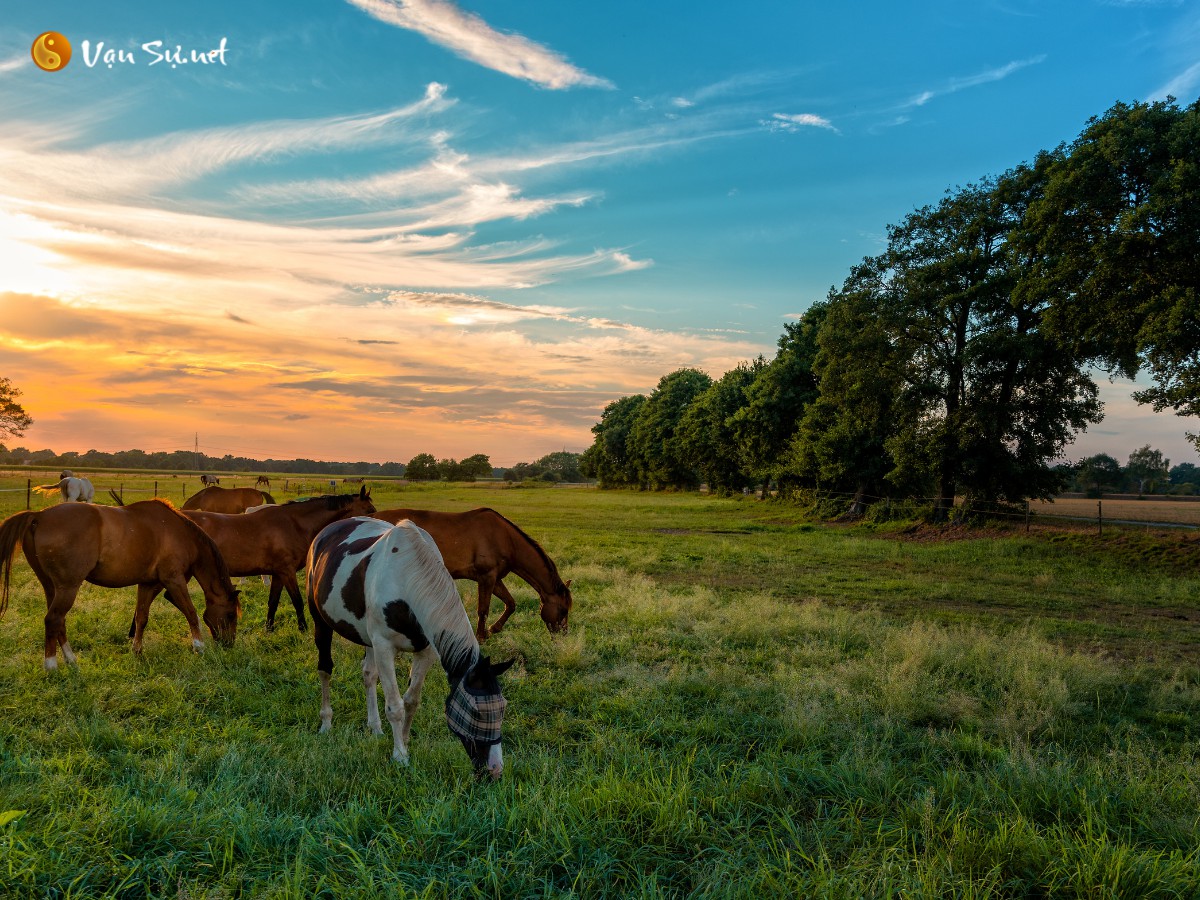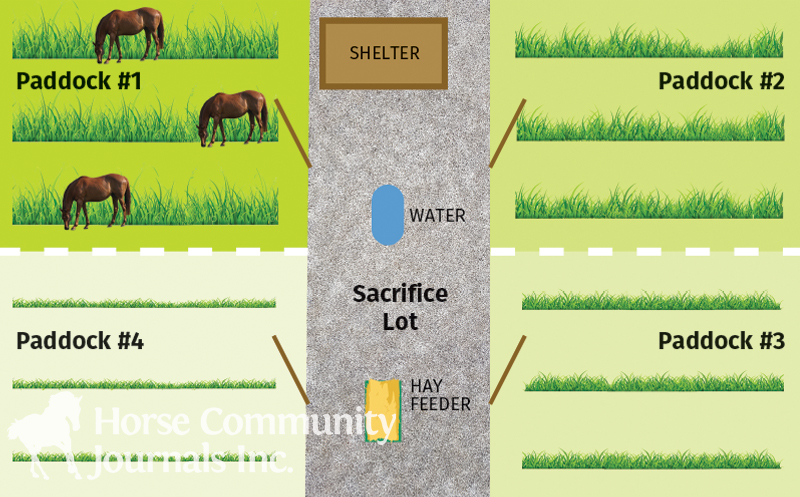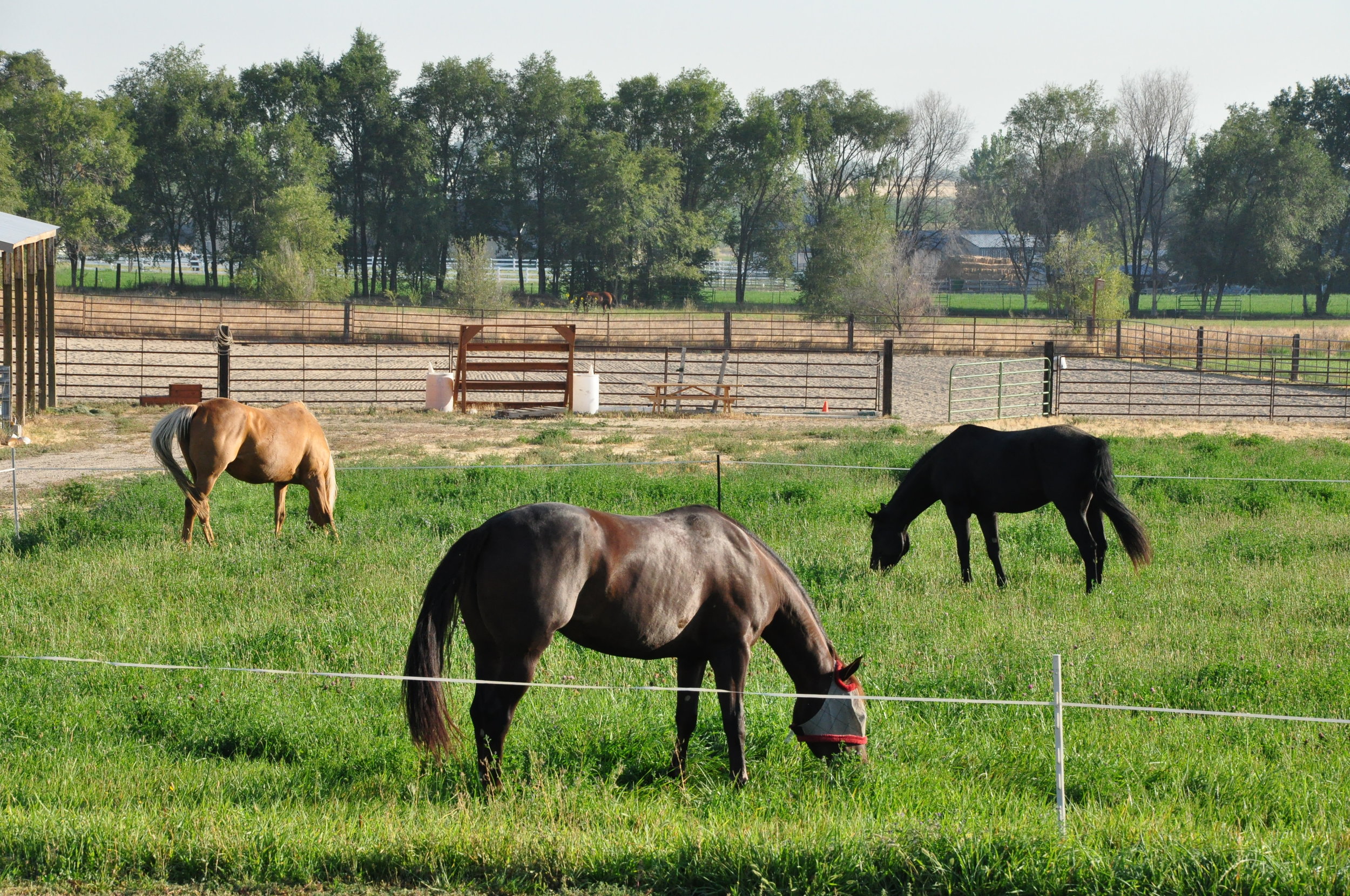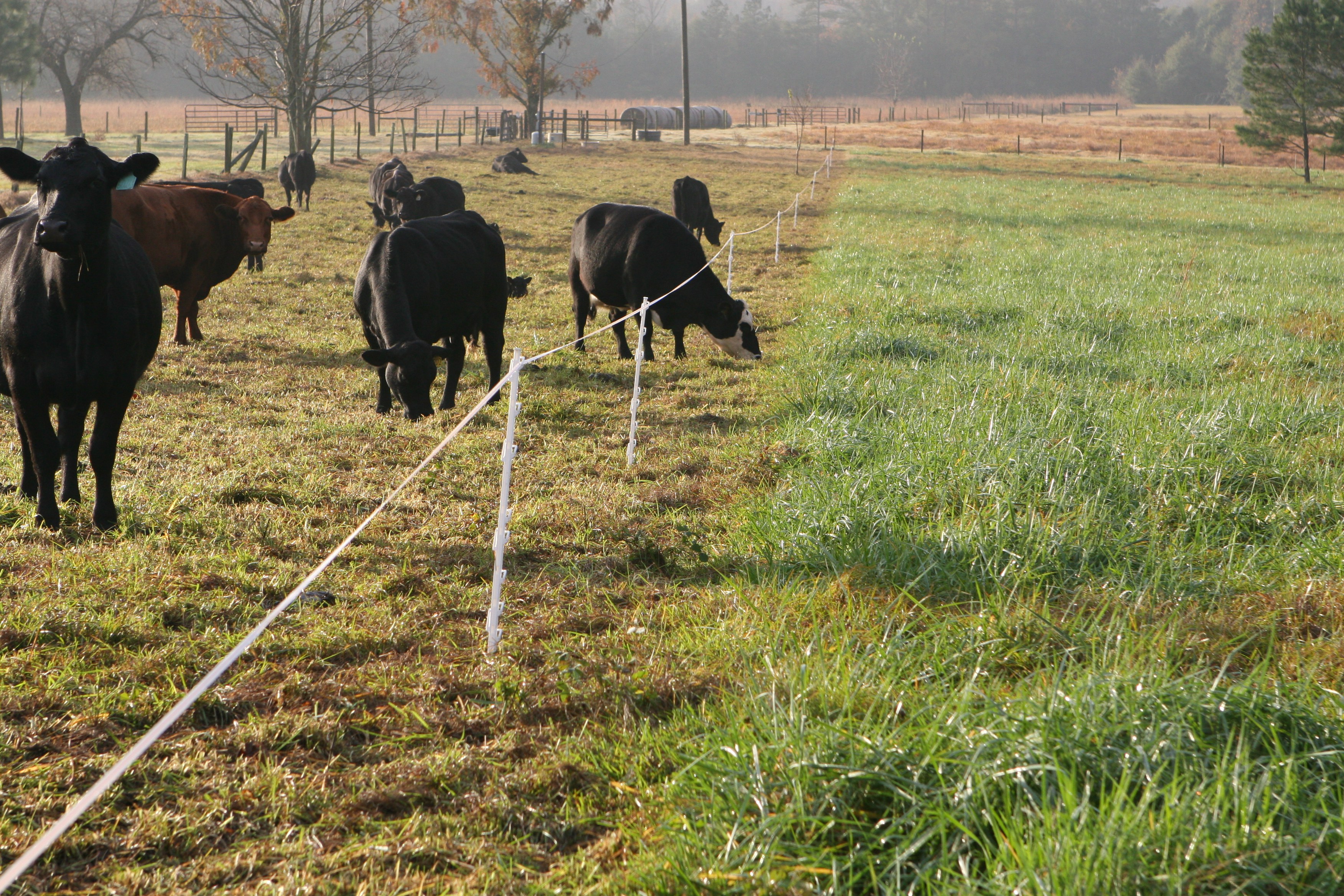Contents

Rotational grazing is a method that opens up a world of possibilities when it comes to managing your pasture. This practice involves dividing the pasture into smaller paddocks, which the horses are then moved between, allowing the grass in one area to rest and recover while the horses graze in another. By implementing rotational grazing, you can shape your horse’s diet and behavior according to their needs, while also improving the health and sustainability of your pasture.
One of the most significant advantages of rotational grazing is the ability to provide horses with a constant supply of fresh grass. Horses are selective grazers, and they tend to overgraze their favorite patches of grass, leaving behind the less preferred ones. By dividing the pasture into smaller paddocks and rotating the horses between them, you can ensure that the horses have access to a variety of grasses and avoid overgrazing in one particular area.
Implementing rotational grazing is ideally suited for farms with more space, as it requires multiple paddocks. The number of paddocks you divide your pasture into depends on the size of the area and the number of horses you have. Generally, three to five paddocks are a good starting point, allowing for adequate rest periods and preventing overgrazing. Additionally, the implementation of rotational grazing is also common among cattle farms, as they too can benefit from a similar management practice.
Rotational grazing also opens up options for fertilizing your grasses. By rotating the horses between paddocks, their manure gets spread across the pasture when the horses move. This acts as a natural fertilizer and promotes healthy grass growth. Additionally, applying regular pasture management practices such as mowing, overseeding, and applying compost during the regular grazing off-season can help maintain and improve the quality of the grazing area.
One of the key benefits of rotational grazing is the ability to control weeds and manage parasite levels. When horses overgraze an area, the grass becomes shorter, allowing weeds to take over. By moving the horses to a new paddock, the rest of the pasture can regrow, reducing the risk of weed infestations. Furthermore, rotating the horses between paddocks reduces the chances of internal parasite infestations, as the parasites have less opportunity to reproduce and spread.
A successful rotational grazing program also involves providing a safe and secure environment for your horses. Fence lines and water sources should be regularly checked and maintained to ensure the horses have access to fresh, clean water and are contained within their designated paddocks. Solar-powered electric fence systems are commonly used to divide the paddocks and are a cost-effective and efficient way to keep horses secure and prevent them from crossing over into other areas.
Overall, rotational grazing offers numerous benefits for horse owners, including improved pasture health, better control over horse diets, and reduced parasite infestation. By dividing the pasture into smaller paddocks and rotating the horses between them, you can optimize your pasture management and ensure the long-term health and happiness of your horses.
Managing established horse pastures
Managing established horse pastures involves a comprehensive program that takes into account the different needs of the plants and grasses, as well as the horses themselves. The goal is to provide optimal grazing opportunities for the horses while promoting the health and longevity of the pasture.
One of the first steps in managing established horse pastures is to assess the condition of the pasture early in the season. This assessment helps determine how much grazing the pasture can support and whether additional steps, such as fertilization or weed control, are needed. Depending on the condition of the pasture, it may be necessary to divide it into smaller paddocks using temporary fencing.
Splitting the pasture into smaller paddocks has several benefits. Firstly, it allows for better control over the horses’ grazing habits, as they are less likely to overgraze certain areas. Secondly, it provides the opportunity to rest certain sections of the pasture, allowing for regrowth of the plants and grasses. Resting periods are important, as continuous grazing can lead to nutrient depletion and reduced pasture quality.
Dividing the pasture also opens up the possibility of implementing a rotational grazing system. This system involves moving the horses from one paddock to the next on a regular basis, usually every few days or weeks, depending on the size of the pasture and the number of horses. Rotational grazing ensures that the horses have access to fresh, high-quality forage while allowing previously grazed areas to recover.
When managing established horse pastures, it’s important to keep in mind that different horses have different grazing preferences. Some horses may prefer the tall, nutrient-rich grasses, while others may be more willing to graze on shorter vegetation. Providing a variety of grasses and legumes in the pasture can help accommodate these preferences.
In addition to managing the horses’ grazing habits, regular maintenance is also necessary to ensure the longevity of the pasture. This includes mowing the grasses when they become too long and removing weeds or unwanted plants. Fertilizing the pasture on a regular basis can also help promote faster regrowth and maintain nutrient levels.
In Kentucky’s climate, it is usually safe to graze horses from April through November, leaving a period of about four months where the pasture is not in use. During this empty period, the pasture manager can perform maintenance tasks, such as reseeding or adding lime to adjust soil pH levels.
In conclusion, managing established horse pastures requires a well-rounded approach that takes into consideration the needs of both the plants and the horses. Implementing a rotational grazing system, dividing the pasture, and regularly maintaining the pasture can help optimize grazing opportunities and ensure the health and longevity of the pasture.
| Key Steps for Managing Established Horse Pastures: |
|---|
| Assess the condition of the pasture early in the season |
| Divide the pasture into smaller paddocks using temporary fencing |
| Implement a rotational grazing system to promote regrowth |
| Provide a variety of grasses and legumes to accommodate horses’ grazing preferences |
| Maintain the pasture through regular mowing, weed control, and fertilization |
| Utilize the empty period to perform maintenance tasks |
Resources for Rotational Grazing

Rotational grazing is a proven method for optimizing pasture management and improving equine health. To implement a successful rotational grazing system, it is important to have access to the right resources and tools. This section will outline some key resources that can help you get started with rotational grazing for your horses.
1. Educational Materials
Educational materials are a great starting point for learning about rotational grazing and its benefits. There are many books, articles, and online resources available that provide in-depth information on rotational grazing systems, including how to set them up and manage them effectively.
2. Local Experts
Consulting with local experts who have experience in rotational grazing can provide valuable insights and guidance. They can help you tailor your rotational grazing system to your specific needs and the unique characteristics of your pasture.
One expert in the field is Laura, a horse farm manager who has successfully implemented rotational grazing practices for many years. She has shared her experiences and knowledge through various workshops and seminars, making her a valuable resource for those interested in rotational grazing.
3. Soil Testing
Before implementing a rotational grazing system, it is important to assess the quality and nutritional value of your pasture soil. Soil testing can provide you with valuable information about the soil’s pH level, nutrient content, and any deficiencies that need to be addressed.
By understanding the specific nutritional needs of your pasture, you can make informed decisions about fertilizing, including which types of fertilizers to use and how much to apply. This can help ensure the health and vitality of your pasture and the horses grazing on it.
4. Fencing and Infrastructure
To implement a successful rotational grazing system, you will need secure fencing and infrastructure to divide your pasture into multiple smaller paddocks. This allows you to rotate the horses between different areas, preventing overgrazing and giving the pasture time to recover.
There are many fencing options available, including traditional wooden or electric wire fences. The choice of fencing will depend on factors such as horse behavior, budget, and personal preferences.
5. Weed Control
Managing weeds is an important part of rotational grazing. Weeds can compete with desirable grasses for resources and compromise the health and nutritional value of the pasture.
Implementing an effective weed control program involves a combination of strategies, including mowing, herbicide application, and manual removal. Consulting with a local extension service or agricultural expert can help you identify common weeds in your area and determine the best control methods.
By utilizing these resources and implementing a well-designed rotational grazing system, you can optimize your pasture management and improve the overall health and well-being of your horses. Gradually implementing the system and monitoring its effectiveness will allow you to make adjustments as needed and ensure long-term success.
Rotational Grazing is Not Just for Cattle Anymore
Rotational grazing is a management strategy that has long been used for cattle, but it is now gaining popularity among horse owners and equine professionals. This method involves dividing a pasture into smaller paddocks and then moving horses from one paddock to another, allowing each area to rest and regrow while minimizing overgrazing.
There are many advantages to implementing rotational grazing for horses. One of the key benefits is that it allows for more efficient use of available resources. By dividing the pasture into smaller areas, horses are not allowed to continuously graze in one spot, which can lead to overgrazing and depletion of forage. Instead, they are moved to a new paddock once the current one reaches a desired level of grazing.
This approach also helps to keep horses healthier. Rotational grazing prevents them from being exposed to harmful parasites and diseases that can build up when they are continuously grazing in the same area. By regularly rotating pastures, horses have a chance to find their preferred forages and avoid grazing on plants that may be toxic or less palatable.
In addition, rotational grazing can lead to improved pasture condition. When horses are confined to smaller paddocks, they tend to graze more evenly, avoiding selective grazing and trampling of certain areas. This allows the grasses and legumes in the pasture to grow at their natural rates, resulting in a more diverse and balanced forage mix.
Furthermore, rotational grazing helps to prevent soil erosion. By keeping horses off of certain areas for a period of time, the grass can grow longer and roots can penetrate deeper into the soil, making it more resistant to erosion caused by rain or grazing. This is especially important in areas with steep slopes or fragile soils, such as Kentucky’s tall bluegrass pastures.
Implementing rotational grazing for horses involves some planning and management. Each pasture should be divided into a suitable number of paddocks, depending on the size of the area and the number of horses. Ideally, a minimum of two paddocks should be used so that horses can be paired together and have enough space to move around. The paddocks should also be paired with a permanent waterer and adequate shelter for the horses.
The duration of time that horses spend in each paddock will depend on several factors, including the size of the area, the growth rate of the forages, and the number of horses. As a general rule, horses should be moved to a new paddock once the forages in the current one have been grazed down to about 3-4 inches in height. This ensures that there is enough plant material left to promote regrowth.
| Components of Rotational Grazing for Horses | Description |
|---|---|
| Rest periods | Allowing each grazed area to rest for a specific period of time, typically a few weeks, before horses are allowed back on it. This ensures that the plants have enough time to regrow and recover. |
| Gradual movement | Moving horses from one paddock to another gradually, rather than all at once. This helps to minimize stress on the animals and allows them to adjust to their new environment. |
| Diverse forages | Planting a diverse mix of grasses and legumes in the pastures to provide horses with a balanced diet and prevent selective grazing. |
| Weed control | Implementing weed control measures, such as mowing, herbicide application, or manual removal, to prevent weeds from taking over the pastures and competing with the desired forages. |
By following these guidelines, horse owners and equine professionals can effectively implement rotational grazing and optimize their pasture management. Not only will this result in healthier and happier horses, but it will also lead to sustainable and resilient grazing systems for the long term.
Divide up your space

In order to optimize pasture management and improve equine health, it is important to divide up your space into smaller grazing areas. This allows for better control over grazing patterns and promotes regrowth of the pasture. When horses have access to a large area, they tend to selectively graze certain areas, leaving other areas untouched. This can lead to uneven pasture growth and increased risk of overgrazing.
By applying rotational grazing and splitting up the pasture into smaller paddocks, you can ensure that the horses have access to fresh grazing areas while allowing the other areas time to regrow. This can be done by using temporary electric fencing to create the desired paddock shape depending on the size of your space.
For example, if your pasture includes a stand of maple trees, you may want to avoid grazing near them as the leaves and seeds can be toxic to horses. By creating a smaller paddock around the maple trees, you can protect the horses from the potential toxicity while also allowing the grass to grow taller and faster in that area.
Gradually, you can move the horses onto the empty paddocks, leaving the previously grazed paddocks to rest and regenerate. This rotational grazing system not only benefits the horses by providing them with high-quality forage, but also improves the overall health of the pasture and reduces the risk of overgrazing.
In addition to splitting up the pasture, it is important to establish permanent fence-lines and safe gateways to ensure the horses can be easily managed during the grazing program. Providing ample water sources in each paddock is also critical to support the horse’s hydration needs.
Many resources are available to help you implement a rotational grazing program for your horses. Laura, our pasture management specialist, has provided step-by-step instructions on how to set up and manage a rotational grazing system. Her expertise and guidance can help you make the most out of your pasture space and ensure the health and well-being of your horses.
Components of Rotational Grazing

Rotational grazing is an effective approach to pasture management that can greatly benefit horses. This system divides a pasture into several smaller paddocks, allowing horses to graze in one area for a defined period before being moved to the next. By strategically rotating the horses between paddocks, several advantages can be achieved.
Improved Forage Utilization
One of the primary benefits of rotational grazing is improved forage utilization. When horses graze in the same area continuously, they tend to selectively eat the more desirable grasses, leaving behind the less palatable ones. By moving horses from one paddock to another, all grasses have an opportunity for recovery and growth, resulting in a more balanced forage composition and increased overall pasture productivity.
Rest and Regrowth
Rotational grazing provides an opportunity for pastures to rest and regenerate. When a paddock is not being grazed, the grass has time to recover and regrow, ensuring a constant supply of fresh forage for the horses. This rest period also allows the roots of the grass to grow deeper, enhancing the pasture’s ability to withstand drought and other environmental stresses.
The frequency and duration of resting periods can vary depending on factors such as the size of the paddocks, the number of horses, and the growth rate of the grass. Ideally, resting periods should be long enough to allow the grass to fully recover, but not so long that the pasture becomes overgrown or weeds take over.
Improved Nutrition
Rotational grazing promotes a more diverse and nutritious diet for horses. Different pasture areas may contain a variety of grasses, legumes, and other forage plants. By rotating horses through different paddocks, they have access to a wider range of forage options, ensuring a more balanced and nutritious diet. Additionally, the rest periods between grazing sessions give the grasses time to accumulate nutrients, resulting in improved forage quality.
In areas where certain grass or plant species may be harmful to horses, rotational grazing can help minimize the risk of ingestion. By keeping horses out of these areas and allowing them to graze on safer options, the chances of accidental ingestion of harmful plants are reduced.
Pasture Health and Management
Rotational grazing also plays a significant role in pasture health and management. By dividing the pasture into smaller paddocks, the overall impact of grazing is spread out, reducing the wear and tear on the grass and soil. The even distribution of manure is another advantage, as horses will move around the paddocks, preventing the accumulation of manure in specific areas. This reduces the risk of parasite infestation and aids in pasture fertilization.
Rotational grazing also allows for targeted management practices, such as applying herbicides or fertilizers to specific areas as needed. For example, if weeds are prevalent in one paddock, herbicide can be applied only to that area, minimizing its use and potential harm to the rest of the pasture. By mapping out the paddocks and keeping track of which areas have been treated or fertilized, resources can be used more efficiently.
In conclusion, rotational grazing involves dividing a pasture into smaller paddocks and strategically rotating horses between them. This system offers several benefits, including improved forage utilization, rest and regrowth of pastures, improved nutrition for horses, and better overall pasture health and management.
Implementation
To implement a rotational grazing program for horses, several key components need to be considered. First, the pasture area should be divided into smaller paddocks to allow for targeted grazing and rest periods for the grass. This helps ensure that horses do not overgraze one area and allows the grass to grow back properly.
Depending on the size of the pasture and the number of horses, the number of paddocks can vary. Generally, it is recommended to have at least four to six paddocks available. This not only helps control grazing pressure but also reduces the risk of soil erosion and improves the overall health of the pasture.
Fencing is an essential aspect of rotational grazing, as it helps create manageable grazing areas and prevents horses from overgrazing. Electric or traditional fencing can be used, depending on the desired level of control and resources available. Fences should be sturdy and secure to ensure horses stay within their designated paddocks and remain safe.
Once the paddocks are established, the rotational grazing program can begin. Horses can be moved from one paddock to another, allowing the grazed area to rest and regrow. The frequency of rotation will depend on factors such as the size of the paddocks, the number of horses, and the time of year. In Kentucky, for example, where the grazing season is longer, horses may stay in one paddock for a shorter time than in cooler climates.
It is important to monitor the growth of grass and adjust the rotation schedule accordingly. If the grass is growing quickly, horses may need to be moved more frequently to prevent overgrazing. Conversely, in periods of slower growth or poor weather conditions, horses may need to spend more time in each paddock to ensure adequate forage availability.
In addition to rotating pastures, supplementary feeding options should also be considered. This could include offering hay or providing access to a small dry lot where horses can graze on grass alternatives such as timothy or legumes. This ensures horses receive the necessary nutrients and prevents them from overgrazing the pastures.
Regular fertilizing can also be beneficial to maintain the health and productivity of the pasture. Soil testing should be conducted to determine any necessary amendments. Fertilizers can be applied before or after grazing, depending on the desired outcome and the type of fertilizer used.
The Importance of Rest
Rest periods are crucial for pasture health and regrowth. Allowing paddocks to rest for an adequate amount of time before re-grazing ensures that the grass has time to grow back and develop strong root systems. Rest periods of four to six weeks are recommended, but this may vary depending on the season and the availability of pasture.
During the rest period, it is important to manage any weeds that may grow and compete with the grass. Regular mowing or herbicide applications may be necessary to control undesirable plant species. This ensures the pasture remains healthy and productive for the horses.
Water Availability
Having a reliable and clean water source within each paddock is essential for rotational grazing. This can be achieved through waterers or troughs placed strategically throughout the grazing area. Waterers should be checked regularly to ensure they are functioning correctly and that horses have access to fresh water at all times.
Overall, implementing a rotational grazing program for horses requires careful planning and management. By dividing pastures into smaller paddocks, rotating horses between them, monitoring grass growth, and providing supplementary feeding and water options, horse owners can optimize pasture health, improve equine health, and make the most of their resources.
Q&A:
How can rotational grazing benefit horses?
Rotational grazing can benefit horses by improving pasture management and overall equine health. It allows for better control over forage intake, reduces the risk of overgrazing, and provides horses with access to fresh grass and diverse plant species. Additionally, it helps prevent the spread of parasites and minimizes the need for supplemental feeding.
What are the components of rotational grazing?
The components of rotational grazing include dividing up the space into smaller paddocks, implementing a system for moving horses between paddocks, providing adequate fencing, monitoring forage growth and rotation schedules, and practicing proper pasture management techniques such as resting and fertilizing paddocks.
How many horses can be kept per acre using rotational grazing?
The number of horses that can be kept per acre using rotational grazing depends on various factors such as the quality of pasture, climate, horse size, and activity level. Generally, it is recommended to have 1-2 acres per horse to allow for proper forage growth and prevent overgrazing.
What are some fencing options for implementing rotational grazing?
There are various fencing options for implementing rotational grazing, including electric tape or wire, high-tensile wire, post and rail, and PVC fencing. The choice of fencing depends on factors such as budget, horse behavior, durability, and aesthetic preferences. It is important to ensure that the fencing is safe and secure to prevent horses from escaping or getting injured.
